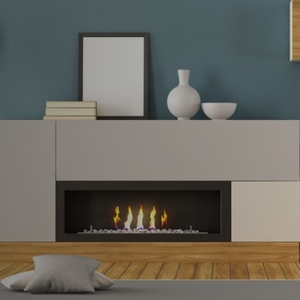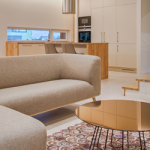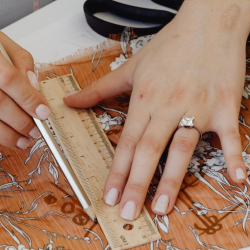Exploring the realm of interior design, the blog sheds light on the anticipated interior designer salary trends prevailing in India throughout 2025. This comprehensive analysis delves into the interior design annual salary packages and factors influencing salaries in this dynamic field.
In this blog, you will learn about the average salary of interior designer in India, alongside understanding the pivotal role and significance of interior design. Additionally, it provides insights into the path to becoming a successful interior designer, detailing the requisite steps and qualifications necessary to thrive in this creative domain.
Table of content
- Who is an Interior Designer?
- Starting Salary for Interior Designer in India
- Average Salary of Interior Designer in India
- Comparison of Interior Designer Salary per Month Across India
- How to be an Interior Designer?
- Key Responsibilities of an Interior Designer
- Importance of Interior Design
- Top 5 Courses for Interior Design in 2025
- Scope of Interior Design in India
- Factors Affecting Interior Designer Salary per Month
- Conclusion
- FAQs
Who is an Interior Designer?
An interior designer is a creative professional who conceptualizes and executes aesthetic and functional interior spaces, enhancing the visual appeal, functionality, and ambiance of residential or commercial environments. These professionals possess a blend of artistic flair, technical expertise, and a keen understanding of spatial design principles to transform spaces into aesthetically pleasing and purposeful areas.
Starting Salary for Interior Designer in India
If you’re planning a career in interior design, one of the firstly questions you may ask is, what is the salary of an interior intriguer in India when starting out? The interior designer’s salary at the entry unwavering depends on factors same your education, city, and whether you’re freelancing or working with an unwavering. On average, a starting interior intriguer salary in India ranges from INR 20,000 to INR 29,750 per month.
Here’s a breakdown of the upcountry figure jobs salary across quite different categories as of December 2024:
| Category | Salary Ranges |
| Average Salary (India) | INR 21,681 – INR 29,750 |
| Experienced Designers | Up to INR 85,000/month |
| Luxury Sector (US) | $58,000 – $95,500 annually |
| Starting Salary (India) | As low as INR 16,000/month |
| Corporate Designers | Up to INR 24 lakh annually |
Average salary of Interior Designer in India
The interior designer’s salary in India varies by experience and location. If you’re wondering what is the average salary of interior designers in India, it increases steadily from entry-level to senior roles. With better skills, the interior design jobs salary improves, making the interior designer salary outlook promising.
| Experience Level | Years of Experience | Salary Range (INR per month) |
| Entry-Level | 0–2 | INR 16,000 to INR 25,000 |
| Mid-Level | 3–5 | INR 35,000 to INR 60,000 |
| Senior Level | 8+ | INR 60,000 to INR 85,000 |
Comparison of Interior Designer Salary per Month Across India
When it comes to interior designer salaries, location plays a key role. Some cities offer higher pay due to demand, cost of living, and the volume of high-end design projects. If you’re wondering what is the salary of an interior designer in different metros, the table below gives a clear view of where opportunities pay best.
| City | Average Monthly Salary (INR) |
| Mumbai | INR 60,000 – INR 75,000 |
| Delhi | INR 55,000 – INR 70,000 |
| Bangalore | INR 55,000 – INR 65,000 |
| Hyderabad | INR 45,000 – INR 60,000 |
| Pune | INR 40,000 – INR 55,000 |
Also Read: Role of an Interior Designer
As you can see, the interior designer’s salary in India is often highest in metro cities like Mumbai and Delhi. Those seeking interior design jobs with salary advantages often relocate to these cities to tap into more lucrative markets.
How to be an Interior Designer?
Becoming an interior designer involves a blend of education, skills, experience, and creativity. Here are steps to pursue a career in interior design:
- Education: Obtain a degree in Interior Design or a related field from a recognized institution. The curriculum typically covers design principles, space planning, materials, construction, and software skills.
- Gain Practical Experience: Seek internships or entry-level positions at design firms, architecture companies, or interior design studios to gain hands-on experience in the field. This provides exposure to real-world projects and client interactions.
- Develop Skills: Hone skills in spatial planning, color theory, design software (such as AutoCAD, SketchUp, Adobe Photoshop), and knowledge of materials and furnishings. Creativity, attention to detail, and problem-solving abilities are essential.
- Build a Portfolio: Create a strong portfolio showcasing design projects, concepts, and any relevant work. Portfolios demonstrate skills, style, creativity, and the ability to interpret client needs.
- Networking: Engage with professionals in the industry by attending design events, joining design associations, and connecting with mentors. Networking can open doors to opportunities and collaborations.
- Certifications and Licensure: While not always mandatory, obtaining certifications like NCIDQ (National Council for Interior Design Qualification) or seeking licensure, if required in your region, can enhance credibility and career prospects.
- Stay Updated: Keep abreast of emerging trends, technologies, and innovations in interior design through workshops, seminars, and continuous learning. Continuous improvement is vital in this dynamic field.
- Start Your Career: Begin as a junior designer or assistant at a design firm to gain further experience. As skills and expertise grow, advance to more senior positions or consider establishing an independent practice.
By following these steps, aspiring interior designers can gradually build the necessary skills, knowledge, and experience to thrive in the field of interior design and carve out a successful career path.
Key responsibilities of an interior designer
Space Planning: Analyzing available space and developing layouts that optimize functionality, traffic flow, and usability while meeting the client’s requirements.
Design Development: Creating design concepts, selecting color schemes, materials, furniture, lighting, and accessories that align with the client’s preferences and project goals.
Project Management: Overseeing projects from conception to completion, coordinating with architects, contractors, and vendors, ensuring adherence to timelines, budgets, and quality standards.
Client Collaboration: Understanding clients’ needs, preferences, and budgets, effectively communicating design concepts, and incorporating feedback to create personalized spaces.
Knowledge of Codes and Regulations: Ensuring compliance with building codes, safety regulations, and accessibility standards while designing spaces.
Use of Technology: Proficiency in design software such as AutoCAD, SketchUp, or 3D modeling software to create visual representations and presentations of design concepts.
Trend Awareness: Keeping abreast of design trends, materials, and innovations to offer clients contemporary and innovative design solutions.
Interior designers collaborate with architects, contractors, and clients to craft interior environments that harmonize functionality, aesthetics, and the clients’ vision. Their expertise lies in transforming spaces into visually appealing, comfortable, and functional areas, showcasing creativity and technical prowess in equal measure.
Importance of Interior Design
Interior design holds significant importance across various aspects:
Enhances Quality of Life: Well-designed spaces contribute to improved quality of life by fostering comfort, functionality, and aesthetics. Thoughtfully designed interiors promote well-being, productivity, and overall happiness.
Optimizes Space Utilization: Interior design maximizes the potential of spaces, ensuring efficient use of available area while maintaining a harmonious balance between form and function.
Reflects Personal Style: Interior design allows individuals to express their personalities and preferences, creating spaces that resonate with their tastes, values, and lifestyle.
Improves Functionality: Strategic design solutions optimize functionality and flow within a space, addressing specific needs and enhancing usability.
Creates Ambiance and Atmosphere: Design elements such as lighting, colors, textures, and furnishings contribute to setting the ambiance, influencing moods and emotions within a space.
Adds Value to Properties: Well-designed interiors add value to properties, making them more appealing to potential buyers or tenants and often commanding higher market prices.
Supports Sustainability: Interior designers increasingly focus on sustainable design practices, integrating eco-friendly materials and energy-efficient solutions to minimize environmental impact.
Boosts Business and Retail: In commercial settings, interior design plays a crucial role in attracting customers, creating memorable experiences, and reinforcing brand identities.
Overall, interior design goes beyond mere aesthetics; it profoundly impacts functionality, comfort, emotions, and experiences within spaces, making it an integral aspect of our daily lives, both personally and professionally.
Top 5 Courses for Interior Design in 2025
Looking to boost your interior designer salary? Here are the top courses to consider in 2025:
1. AAFT Online – Diploma in Interior Design
NSDC-approved with expert-led training and 100% placement support.
2. Pearl Academy – Interior Design UG Program
Industry-relevant curriculum with a modern design focus.
3. CEPT University – B.Des in Interior Design
Strong academic base with hands-on project exposure.
4. NID – Furniture & Interior Design
Highly reputed for its creative and design-led approach.
5. MIT Institute of Design – B.Des in Interior Space Design
A balanced program for practical and conceptual learning.
Scope of Interior Design in India
The interior designing scope and salary in India continues to expand, offering abundant opportunities in various sectors:
- Real Estate and Construction: With the booming real estate industry, there’s a growing demand for interior designers to create appealing and functional spaces within residential and commercial properties.
- Hospitality Industry: Hotels, resorts, restaurants, and cafes are increasingly focusing on unique and immersive interior designs to attract customers, creating a niche for interior designers specialized in hospitality interiors.
- Retail and Commercial Spaces: Interior designers play a pivotal role in designing retail stores, offices, and commercial spaces, enhancing brand identity and customer experience.
- Residential Projects: The increasing emphasis on personalized home interiors has amplified the demand for interior designers in the residential sector, catering to individual preferences and lifestyle needs.
- Sustainable Design: There’s a growing trend towards eco-friendly and sustainable design practices, opening avenues for interior designers specializing in sustainable interiors.
- Event and Exhibition Spaces: Designers also contribute to event and exhibition spaces, creating engaging and immersive environments for trade shows, exhibitions, and events.
- Furniture and Product Design: Some interior designers diversify into furniture and product design, creating bespoke furniture pieces or accessories that complement interior spaces.
- Academia and Consultancy: Experienced designers often venture into teaching, mentoring, or consultancy roles, sharing expertise and guiding upcoming designers or advising clients on design projects.
Overall, the evolving lifestyles, urbanization, and the increasing appreciation for aesthetic and functional spaces in both personal and commercial spheres contribute to the ever-expanding scope of interior design in India. This field offers diverse opportunities for creative expression, innovation, and professional growth.
Factors Affecting Interior Designer Salary per Month
If you’re curious about what is the salary of an interior designer, here are the main factors that influence earnings across the industry:
-
Experience Level
More experience often means higher pay. Senior professionals can earn up to INR 85,000 monthly, significantly boosting their interior designer salary.
-
Education
Holding advanced degrees or certifications—like a diploma in interior design—can increase your chances of a better interior design job salary.
-
Location
Metropolitan cities such as Mumbai, Delhi, and Bangalore typically offer higher interior designer salaries in India compared to smaller towns.
-
Employer Type
Established companies and corporates usually offer a higher monthly salary for an interior designer than freelance or small businesses.
These factors play a key role in determining what is an average salary of interior designer in India, so it’s important to consider them when planning your career.
Conclusion
In conclusion, interior design in India presents a vast canvas of opportunities across diverse sectors, encompassing residential, commercial, hospitality, and sustainable design realms. The profession not only allows for creative expression but also demands a keen eye for functionality and aesthetics, catering to the evolving needs and preferences of clients. The scope for interior designers spans from shaping immersive retail spaces to crafting sustainable and personalized residential interiors. As for salaries, the field offers varying remuneration depending on factors like experience, expertise, and whether one works independently or with established firms, making it a dynamic and rewarding career choice for those passionate about shaping spaces and experiences.
FAQs
1. How much do interior designers earn at the entry level?
The interior designer’s salary at the entry-level in India typically ranges from ₹15,000 to ₹30,000 per month. This amount varies depending on the company, location, and candidate skills. For freshers, interior design jobs salary usually starts modest but offer good growth potential.
2. Which interior design position pays the most in India?
Senior roles like Lead Designer or Design Manager usually command the highest interior designer salary in India. These positions require more experience and creative leadership, often earning ₹70,000 or more monthly.
3. What are the key factors that affect an interior designer’s salary in India?
The main factors influencing the interior designer’s salary include experience, location, company reputation, and skill set. For example, metropolitan cities offer higher pay, while specialized skills can boost the interior design jobs salary significantly.
4. How does an interior designer’s salary grow over time in India?
As interior designers gain experience and build a strong portfolio, their salary increases steadily. The average salary of an interior designer in India can rise from around ₹20,000 at entry level to over ₹1,00,000 per month for senior professionals, depending on performance and expertise.
























